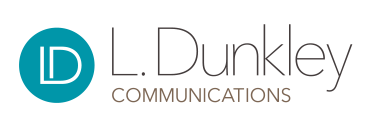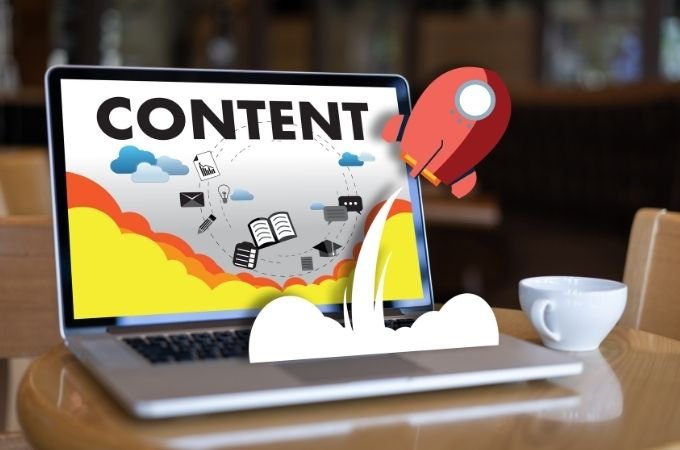How to Create Great Marketing Content
Here are some tips and best practices that will help you create great marketing content to build brand awareness, inform your audience, and promote your business offerings.
A Content Marketing Strategy is important to promote your business.
“Content is King” is a term that Bill Gates used in a Microsoft speech in 1996.
Gates emphasized using technology's interactive media along with quality content when speaking, stating that people "must be rewarded with deep and extremely up-to-date information that they can explore at will," but stated that "those who succeed will propel the Internet forward as a marketplace of ideas, experiences, and products-a marketplace of content."[1]
So after 17 years, we all know content is important, but how do we create content that is what people want to read and helps support our business goals?
TIPS ON HOW TO CREATE GREAT CONTENT
The actual text, the visuals, the audio words are unique to each industry (and company), but if you keep these four guiding best practices in mind, you can’t go wrong.
Know your audience – give them information that they will find relevant to their needs. Be a resource for customers (and prospective customers) to help them in various stages of their buying cycle (research, business requirements, comparing solutions, purchasing, loyalty)
Be interesting – add a visual (video or photo) to improve readership. It is proven that your blog or post will be read more frequently if you have a visual. Tell a story! Make your writing conversational if possible, and you better get their attention quickly with a great heading and ‘grabber’ in the first paragraph.
Get to the point – don’t beat around the bush! Say what you need to say and then stop talking!
Be timely – make sure your topic is relevant to what is happening today in your industry. Your reputation as a thought leader, or a leader in your industry, depends on you keeping your finger on what is current and applicable to the needs and interests of your audience(s).
IDEAS FOR THE TYPE OF CONTENT TO CREATE
Find out what challenges your customers may be having and answer those questions. Ask those on the front lines – your sales people! (FAQ page, blog post, video, webinar)
Offer insight into some recent industry (third party) research that has been published and make sure to include key takeaways for your readers (blog post, infographic)
Case Studies - Use a case study to highlight a customer story that represents your typical buyer, or one that you will be targeting in the near future. (webpage, newsletter, .pdf for download)
Success Stories – similar to a case study, but are shorter and more testimonial rich (newsletter, brochure, webpage)
Press Release (PR newswire, media site, email)
How to Guides / White papers (.pdf, blog post, video, podcasts, eBook)
eBooks
Company Brochure (.pdf, webpages)
Industry event topic review- When you go to a trade shows, or an industry specific event where there are keynote speakers, write a review! If you find the topic interesting, it is very likely your customers will find it interesting as well. (blog)
News! Company awards, press that your company has received, industry news that is important to your customers that applies to your company, etc. (Media page on your website, an “in the news” section)
HOW YOU CAN BUILD A GREAT CONTENT LIBRARY
Ask for a little in return when offering extensive information
It is not too much to ask for a name and email address from someone interested in reading one of your larger resource documents (i.e. white paper, webinar, research paper). However, don’t have this interested person give you their information more than once per website - It becomes annoying and you could lose out on an opportunity to build a relationship with this potential client/customer.
Integrate your marketing with sales
There are so many software packages and online platforms that let organizations track their online traffic, optimize social media strategies (listen, respond, schedule, etc.), collect information on possible leads, integrate with a CRM (Customer Relations Management) system for sales to follow up, and then create metrics to track your success. A good solution will have a common dashboard so that both managers can seamless track the progress of the entire process. Examples of some of these programs are ZOHO, Salesforce, and HubSpot.
Be strategic – A communication plan of any kind must always consider the overall goals of the organization – short term and long term – and work to support those goals.
Key Words – talk to marketing about key words that they are using for SEO and integrate them as often as possible into your content
Editorial Calendar – First you need to have an overall business calendar schedule (events, parties, ceremonies, trade shows, holidays, etc.). Then make sure you have a plan on what content needs to be created, why it is being created, where it will be posted, and when it will be posted. Task appropriate people to each piece of content and set up a review process if needed. More reading on editorial calendars
Social Media – social media must be part of your overall marketing strategy for all B2B and B2C businesses. Know where your audience is ‘hanging out’, make sure your company has an optimized profile on each of these platforms and then start engaging in meaningful conversations. Share your created content when appropriate.
What resources are available – human resources to create and manage the content (and conversations), and then budget resources (i.e. video costs more to create than a blog post).
WANT HELP TO BUILD YOUR CONTENT?
Some organizations have a marketing and communication team that is on staff. If you don’t have an in-house team, or you want help in developing a strategy, interview a marketing agency or communication consultant to see who would best suit your company’s needs.
We know that creating marketing content is never easy! It is hard work, and even harder work to create good content! It really is worth all the effort in the long run, so keep up the good work.
References
[1] Bill Gates' 1996 "Content is King" has reigned 16 years (2011)
Content Rules – by Ann Handley (COO, MarketingProfs) and C.C. Chapman (Founder, Digital Dads) – 2011

